50+ Sample Crisis Communication Plan
-
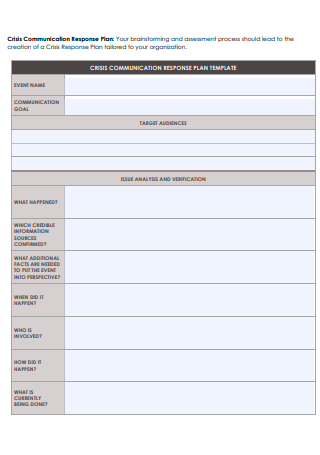
Crisis Communication Response Plan
download now -
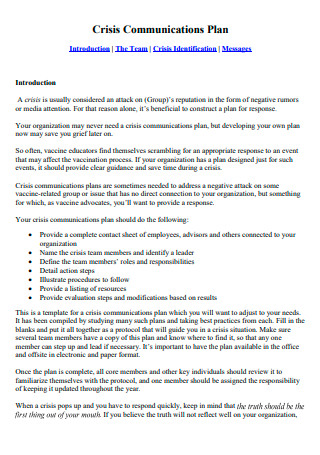
Basic Crisis Communication Plan
download now -
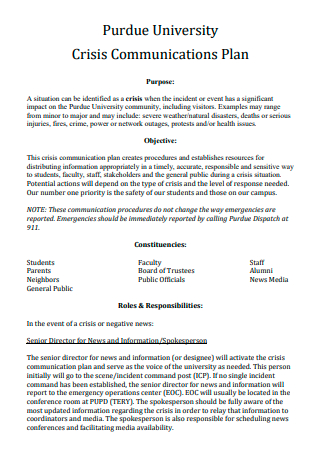
University Crisis Communication Plan
download now -
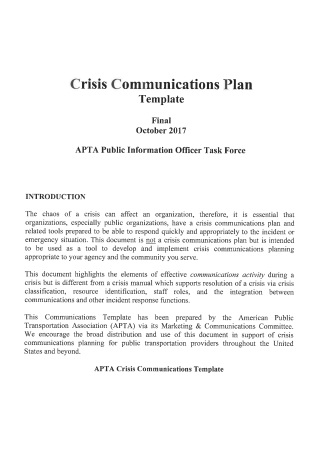
Crisis Communication Plan Template
download now -
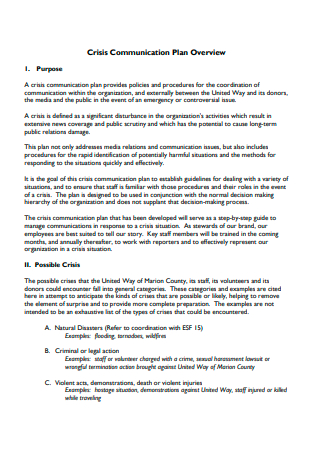
Crisis Communication Plan Example
download now -
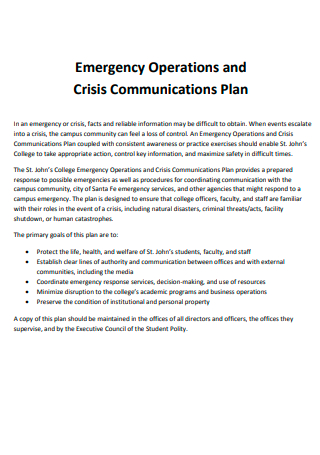
Emergency Operations and Crisis Communications Plan
download now -
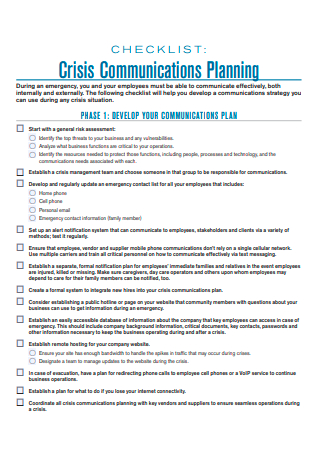
Crisis Communications Planning Checklist
download now -
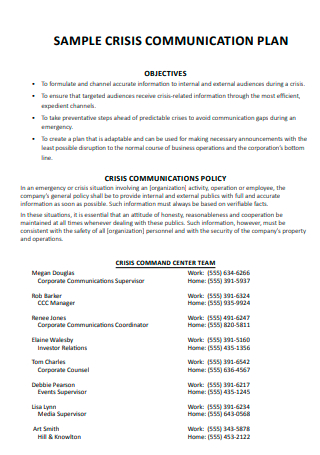
Sample Crisis Communication Plan
download now -
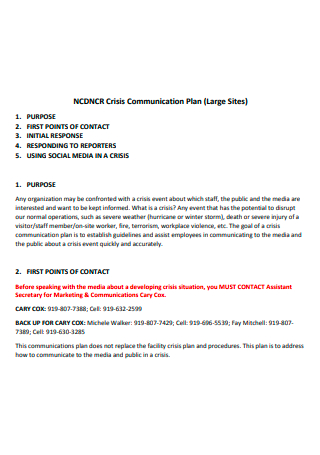
Large Sites Crisis Communication Plan
download now -
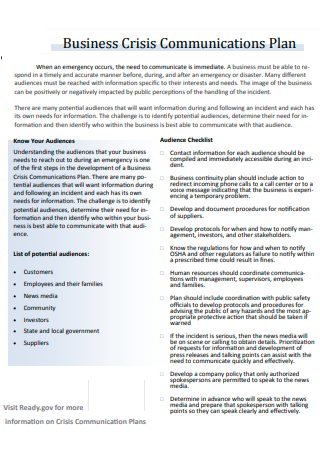
Business Crisis Communication Plan
download now -
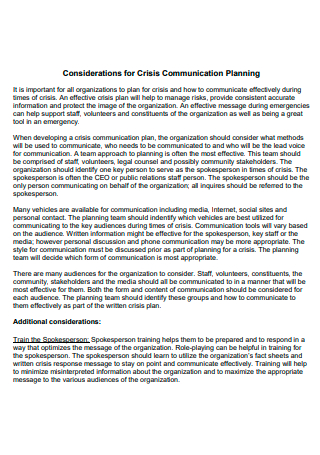
Considerations For Crisis Communication Planning
download now -
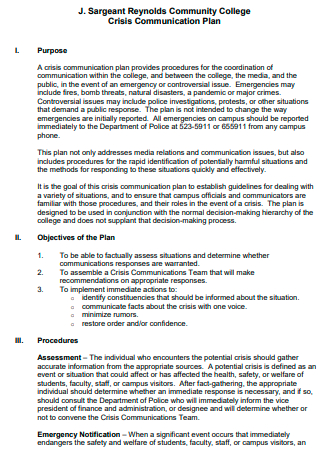
Community College Crisis Communication Plan
download now -
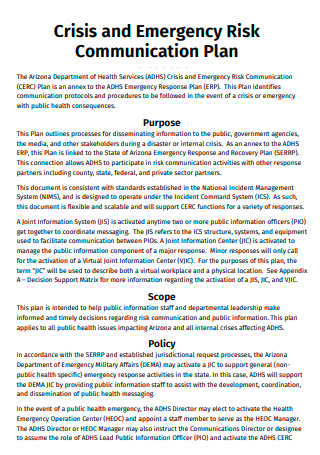
Crisis and Emergency Risk Communication Plan
download now -
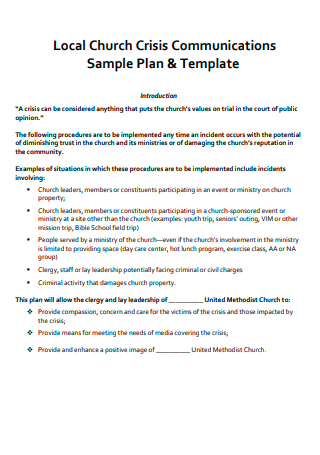
Local Church Crisis Communication Plan
download now -

College Crisis Communication Plan
download now -
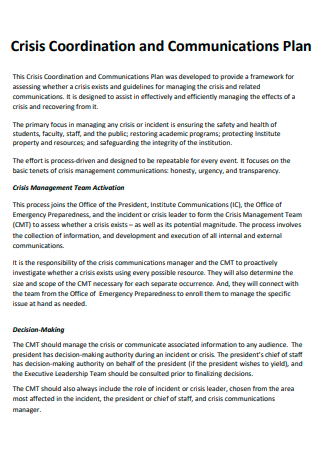
Crisis Coordination and Communication Plan
download now -
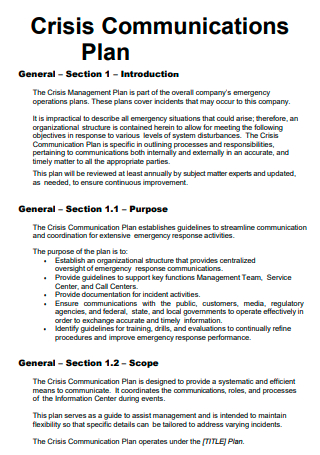
Standard Crisis Communication Plan
download now -
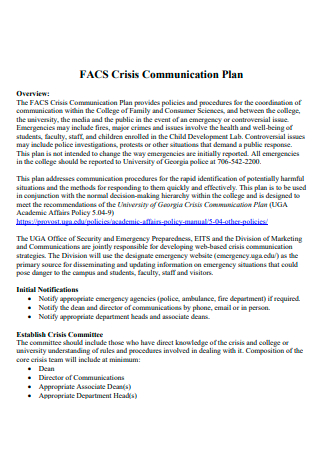
Crisis Communication Plan in PDF
download now -
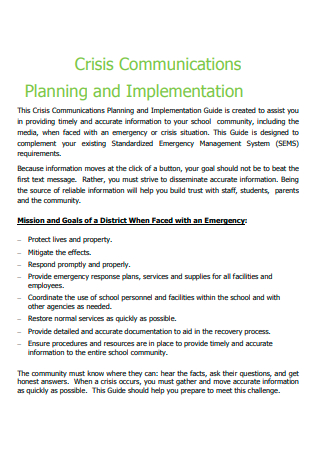
Crisis Communication Planning and Implementation
download now -
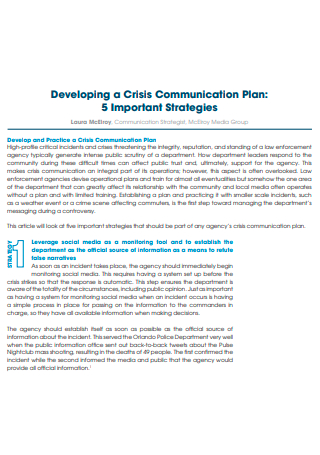
Developing a Crisis Communication Plan
download now -
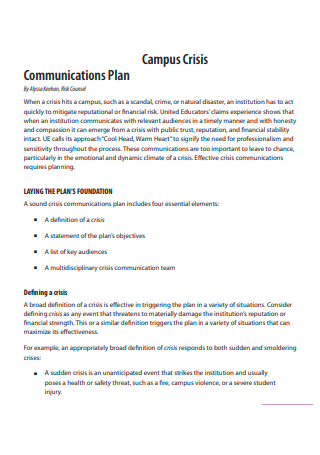
Campus Crisis Communication Plan
download now -
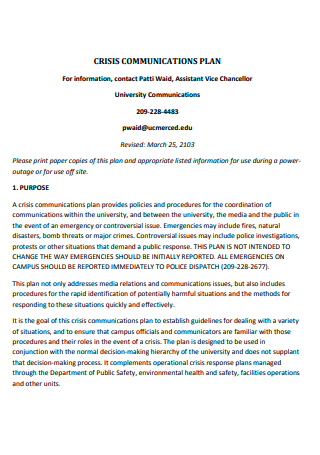
Printable Crisis Communication Plan
download now -
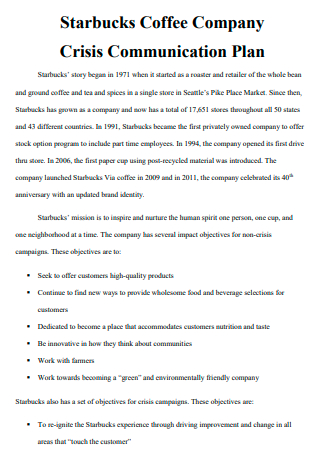
Coffee Company Crisis Communication Plan
download now -
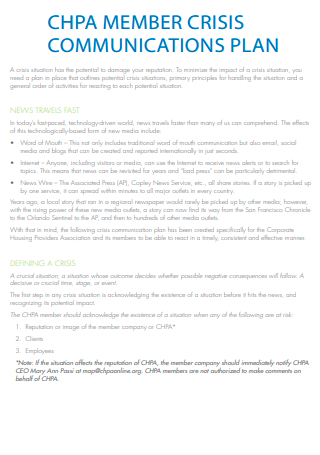
Member Crisis Communication Plan
download now -
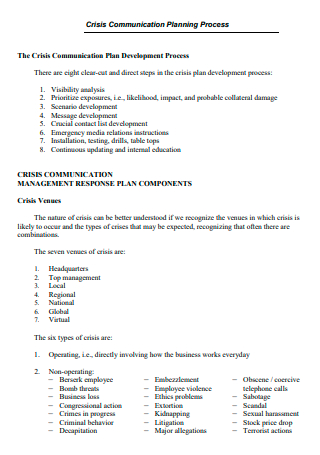
Crisis Communication Planning Process
download now -
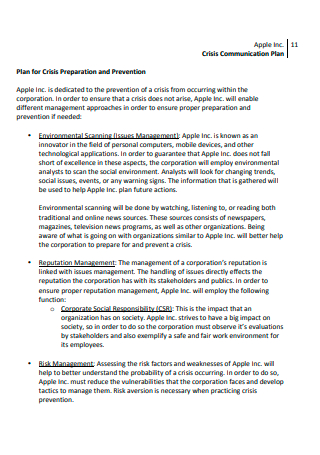
Crisis Preparation and Prevention Communication Plan
download now -
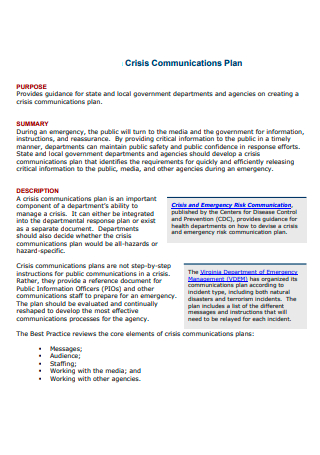
Crisis Communication Plan Format
download now -
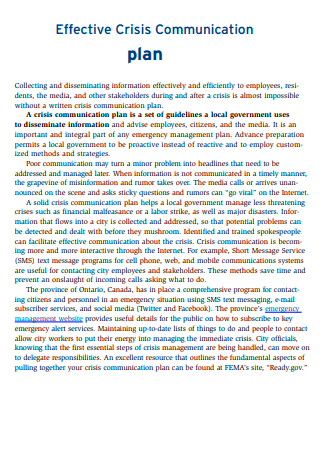
Effective Crisis Communication Plan
download now -
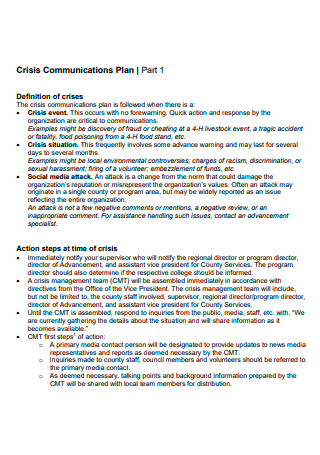
Simple Crisis Communication Plan
download now -
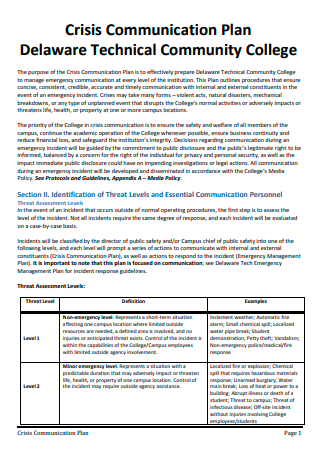
Technical Community College Crisis Communication Plan
download now -
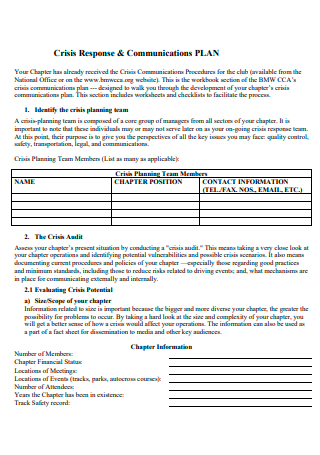
Crisis Response and Communication Plan
download now -
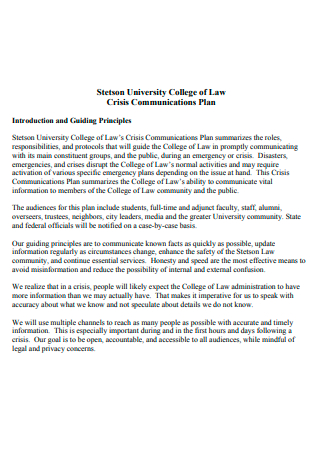
College of Law Crisis Communications Plan
download now -
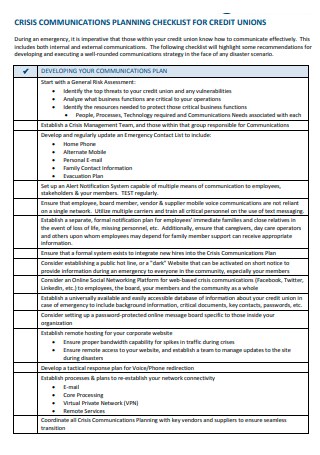
Crisis Communication Planning Checklist For Credit Unions
download now -

Crisis Management Communication Plan
download now -
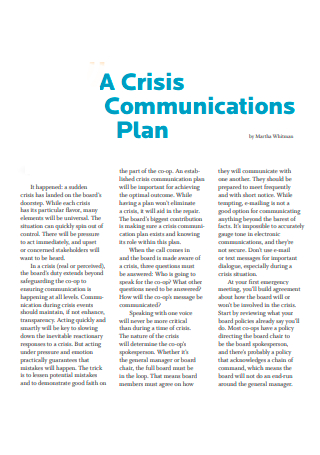
Formal Crisis Communication Plan
download now -
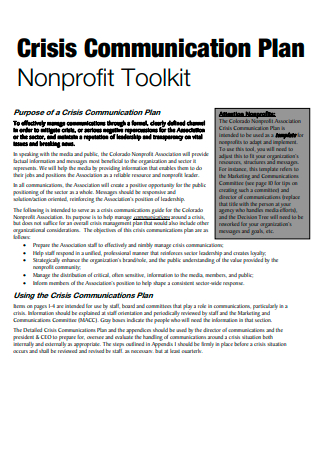
Non Profit Crisis Communication Plan
download now -
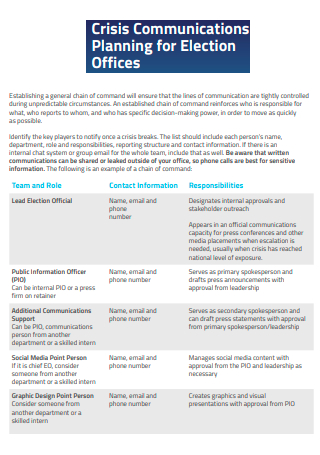
Crisis Communication Planning For Election Offices
download now -
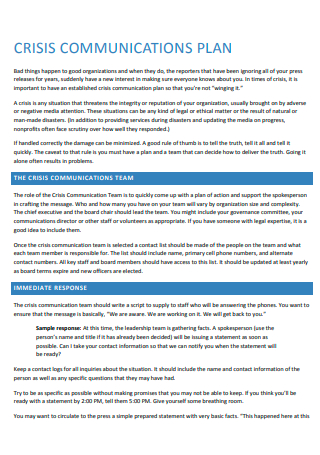
Draft Crisis Communication Plan
download now -
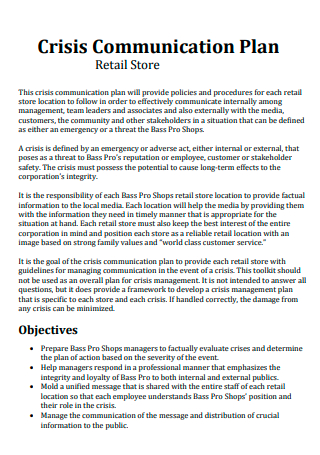
Retail Store Crisis Communication Plan
download now -
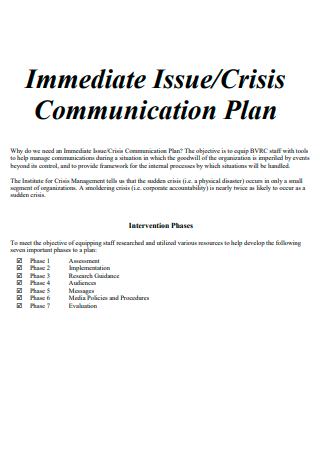
Immediate Issue Crisis Communication Plan
download now -

Crisis Communication Plan Memorandum
download now -
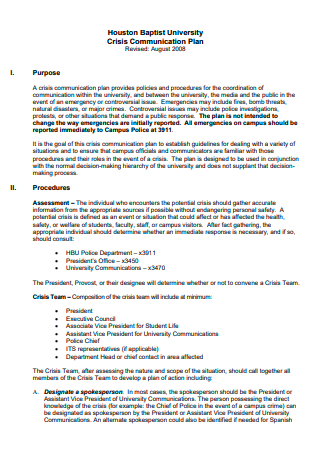
Baptist University Crisis Communication Plan
download now -
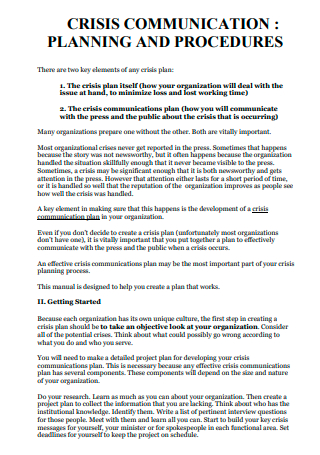
Crisis Communication Planning and Procedure
download now -
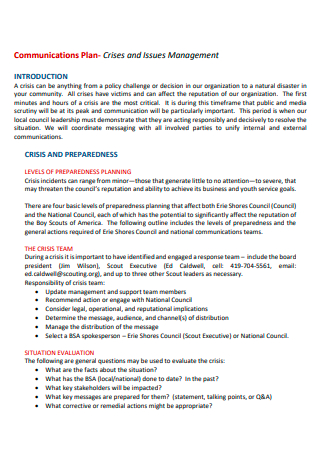
Crisis and Issues Management Communication Plan
download now -

Civil Air Crisis Communication Plan
download now -
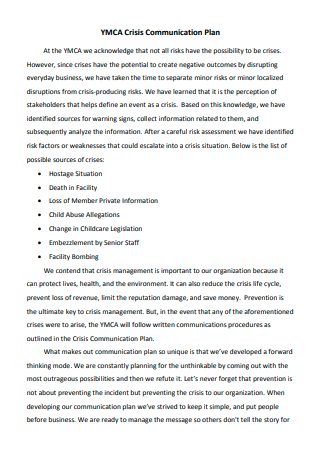
YMCA Crisis Communication Plan
download now -
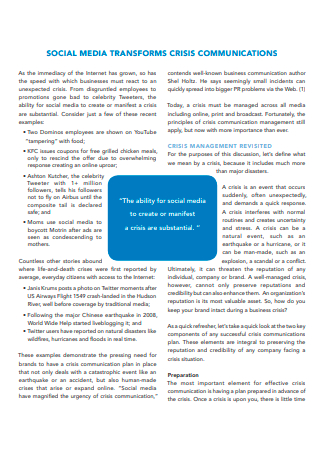
Social Media Transforms Crisis Communication Plan
download now -
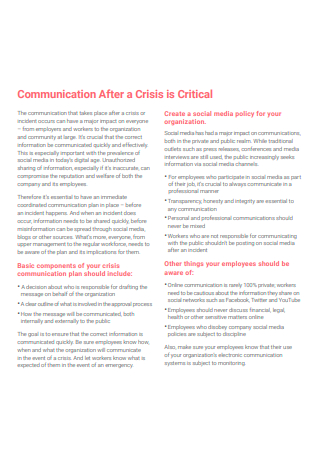
Crisis is Critical Communication Plan
download now -
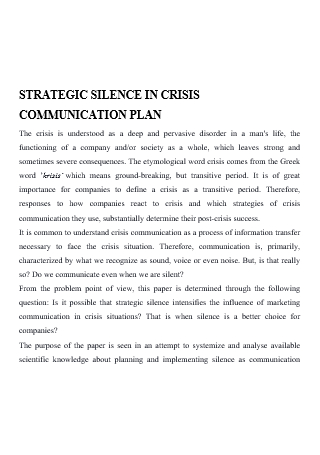
Strategic Silence in Crisis Communication Plan
download now -
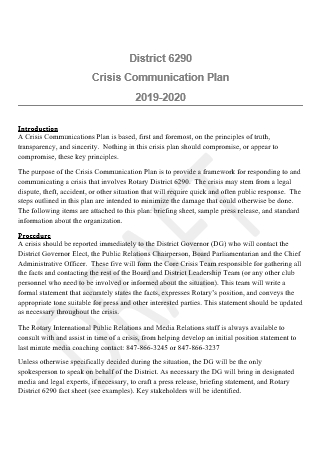
District Crisis Communication Plan
download now -
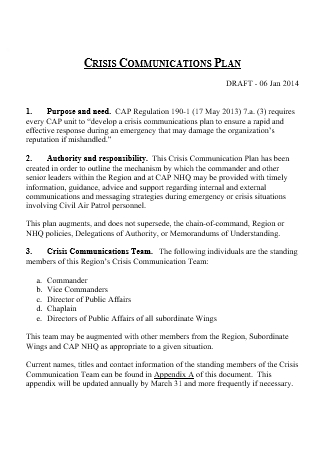
Crisis Communication Plan in DOC
download now
FREE Crisis Communication Plan s to Download
50+ Sample Crisis Communication Plan
What Is a Crisis Communication Plan?
Benefits of Having a Crisis Communication Plan
Types Of Crises
Steps On How to Make a Crisis Communication Plan
FAQs
Why Is a Crisis Communication Plan Necessary?
In Crisis Communication, Is Proactive Better Than Reactive?
What Constitutes as a Crisis?
What Is a Crisis Communication Plan?
A crisis communication plan is a document that serves as a guide for controlling the communication line and flow during a crisis. It specifies how to deal with the media as well as its own employees. A crisis communication plan, like an emergency response plan, covers the actions and steps to be taken by the crisis management team by developing a plan based on the available technology and communication channels. Because it is vital during a crisis, it is required to form a team with proper crisis management training to handle the requirements of those who may be affected as well as public sentiment. After conducting ongoing surveys and changes, as well as reading through numerous safety observation reports, a strategy can be developed in the event of a crisis, such as a natural disaster.
During the epidemic, there was a clear need for a crisis communication plan. This disaster touched everyone on a large scale, and an inefficient communication strategy was simply one factor contributing to the widespread panic. The pandemic was a crisis on all levels; more specifically, the implications of COVID-19 for mental health are one of the most visible problems that occurred from the pandemic. And the spread of fake news and a lack of appropriate communication down to individuals who actually need verifiable facts may have led to that anxiety and increased substance usage. It is clear that those in authority at the governmental level must reach out to and communicate effectively with the people who are disproportionately affected by the pandemic.
Benefits of Having a Crisis Communication Plan
One of the most irritating cliches in novels is when characters have an evident miscommunication and refuse to sort it out. Particularly when there is a dilemma in front of them and they must collaborate to solve it. One aspect to mention is that having effective communication between spouses helps their relationship. Similarly, no one, especially those at the top who care about their company’s brand, wants to unintentionally generate a poor image merely by managing a crisis ineffectively or dealing with public reaction. That is why you should consider the following advantages of having a documented crisis communication plan:
Types Of Crises
Every day, whether we like it or not, a crisis occurs in someone’s workplace or in the security of someone’s home. And we cope with it based on previous experience or what has been passed down as the appropriate response. And these reactions differ depending on the crisis. And, while we cannot list them all, these are the five most common crises:
Steps On How to Make a Crisis Communication Plan
A crisis communication plan is critical both during and after a crisis. It is critical to have a thorough and precise plan in place for the crisis teams and other staff to follow. It’s a precautionary measure to avoid more loss and damage. Here are the steps to creating a crisis communication plan.
Step 1: Anticipate the Crisis
The first step in developing any strategy is to anticipate that it will occur, regardless of whether or not it will take place. It’s difficult to change a strategy when the circumstances around the problem are obscure. Anticipate the plan and prepare for it so that the guidelines established in the communication plan are tailored to a specific situation. Because each crisis may need a distinct reaction, it is best to avoid generalization when developing a plan. Anticipation typically causes anxiety, but on the other hand, it prepares a corporation or any organization to face the repercussions as well as the procedures to follow.
Step 2: Train a Communication Team
When a crisis occurs, it is critical that the team in charge of responding understands the method. This minimizes future damage and allows for a smoother operation. This includes training both the entire communication staff and the spokesperson. When reporters and the public demand answers, the spokesman will be the face. They will be prepared for the outpouring of fury or expectation from the general public. Assigning one is therefore critical to the overall goal of the plan. It’s preferable if the appointed spokesperson or responding team also knows how to deal with the public, how to keep them calm when they’re angry or anxious.
Step 3: Set a Guideline
It is even preferable if the communication team has a guideline or manual to follow in order for them to be effective. The crisis communication plan policy would specify what they could do in the face of a deluge of queries from the media and staff alike. Most notably to the company’s upper management and investors who are concerned about the company’s stock. The guidelines would serve to alleviate everyone’s concern while also adhering to a more rigorous approach. A guideline could help to control the spread of disinformation while also establishing and alerting the procedures to take.
Step 4: Establish a System
It is critical that your communication plan include a system rather than just guidelines. This system would need the development of communication channels, as well as a notification and monitoring system. This would allow everyone, especially those in the front, to adjust their responses based on what the monitoring system indicates. It would aid in avoiding unnecessary blunders in speech or other activities that would arouse rage. A notification and communication channel would be extremely beneficial to both the affected and the personnel engaged. Most notably to stakeholders, in order to develop a system that would quickly notify and inform them.
Step 5: Develop Statements
Already-made statements would aid in faster response and better crisis management. If well-managed, an initial statement can prevent misinterpretation as well as scathing remarks after slight modifications. These statements would aid the spokesperson in controlling the media and providing time for other teams to counter. These statements should be accurate while also demonstrating contrition and compassion.
Step 6: Conduct Surveys and Interviews
Conducting surveys among potential crisis participants would assist ease the stress of developing a plan from scratch. Their input would also be useful in modifying the plan. Obtaining feedback is crucial in public relations, to correct risk and damage.
FAQs
Why Is a Crisis Communication Plan Necessary?
A crisis communication plan, particularly one that is printed, is required as a framework for the crisis team to follow when preventing harm and loss during a crisis. Because miscommunication can harm a firm’s image or cause employees to lose trust in the company, a good crisis communication plan can alleviate those concerns. It would be beneficial, particularly with regard to media and public inquiries, in order to control discontent and outrage.
In Crisis Communication, Is Proactive Better Than Reactive?
Proactive rapidly dismisses any rumors, whereas reactive would first investigate the general public’s, employees’, and stakeholders’ sentiments before issuing a remark. So, when it comes to crises, they both have advantages. One would gain the upper hand fast but is prone to errors, and the other is more cautious but may fuel public fury. As a result, a combination of both is preferable and more effective. Being proactive but also ambiguous in initial statements may help to reduce misinformation, while being reactive to provocation and distrust may help to strengthen it.
What Constitutes as a Crisis?
A threat is regarded a crisis when there is a difficulty in resolving or coping with the issue, as well as when there is a restricted or short amount of time to intervene or make choices about it. There is a stressful aspect present, as well as a disruption in the normal or regular routine. It is a crisis when there is a need to respond fast and efficiently.
Writing an effective crisis communication plan is only one method of avoiding a crisis when it occurs. Anticipate and respond properly, and you will be able to reduce disinformation and boost public trust. Alternatively, you may use Sample.Net to find a sample crisis communication plan as a guideline and ace any ongoing crisis communication!
